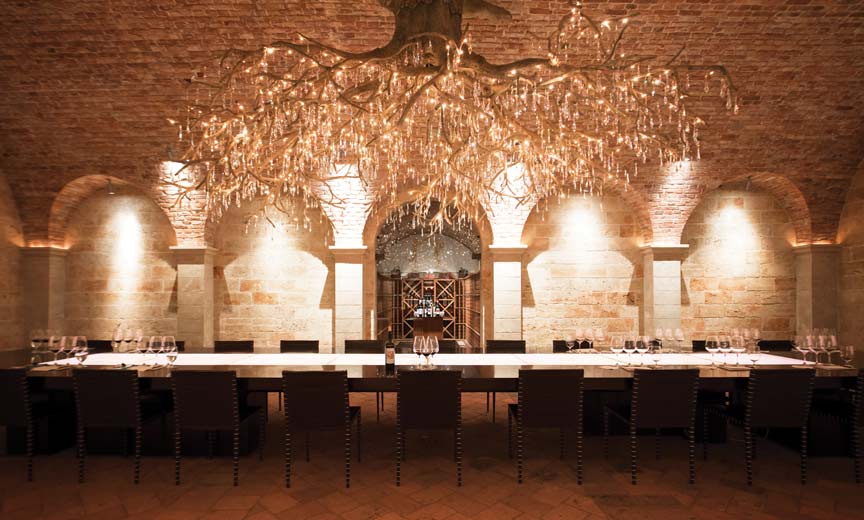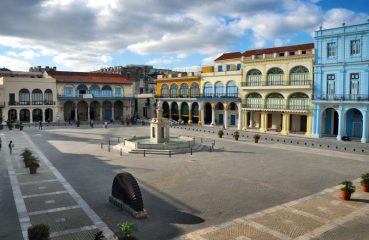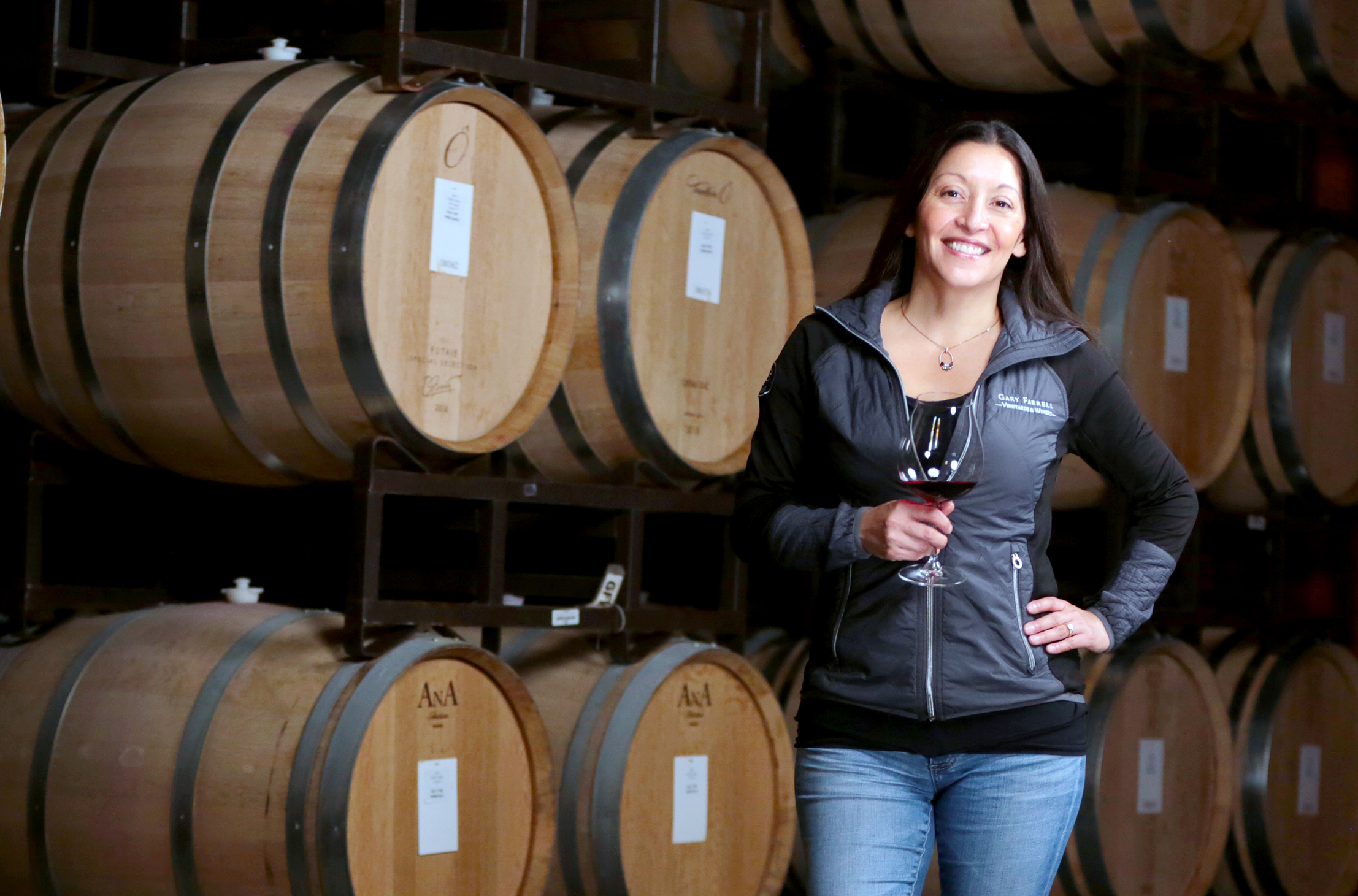We travel the globe in search of wineries worth visiting — where the art of winemaking extends well beyond anything you’ll find in a glass.
The main reason to visit a winery is, of course, the wine. however, now more than ever, there is more to experience at a quality winery than the nectar inside each bottle. The design of a winery can offer insight into how its grapes are cultivated, gathered and sorted; how the wine is fermented and aged; even how it is meant to be enjoyed. Many winemakers will tell you that a wine’s terroir — or sense of place — is a vital part of the philosophy behind its making. So we’ve gathered a selection of stunning world wineries you can visit, where what they’re pouring is only one component of what’s designed to impress.
HALL
Napa, California
Kathryn and Craig Hall originally commissioned superstar architect Frank Gehry to design a new winery for them in the heart of Napa. While those plans were put on hold, the Halls eventually did unveil a gorgeous new visitor center in St. Helena. This one was designed by Jarrod Denton of Signum Architecture along with architect Alison Maloney, and it has been turning heads since its opening in 2013.
One of its most impressive features is an eye-catching two-story structure, sheathed in glass, that was conceived as a kind of “bridge” on the valley floor between the Mayacamas Mountains in the west and the Howell Mountains to the east. The building houses wine presses and fermentation tanks, while its upstairs tasting rooms overlook the estate vineyards and gardens. There is also a second floor terrace with views of the mountains and the winemaking facilities.
It’s worth noting that the new building is LEED Gold-certified — the first winery to be so in California — for its environmental sustainability measures. It is also connected to a former winery which dates all the way back to 1885 called the Bergfeld Building, which was also restored during the project and is now used for special events.
For art lovers, the complex is home to some larger works from the Halls’ significant collection, including sculptures by John Baldessari and Jim Drain in addition to installations by Graham Caldwell and Nick Cave.

VIK—Photo courtesy Smiljan Radic
Meanwhile, HALL Rutherford continues to thrive in Sacrashe, the Halls’ first Napa Valley vineyard. The couple’s dedication to timeless beauty and hospitality are captured in what is undoubtedly one of the region’s most visually striking tasting rooms (pictured, above).
HALL makes a delicious Sauvignon Blanc with tropical notes of pineapple and lime and deeper flavors of mandarin orange and dried herbs. But the winery’s signature releases are its Cabernet Sauvignons. An excellent example is the Diamond Mountain; its intense fruit notes are balanced by more savory elements like licorice, tobacco and a beguiling tinge of graphite. hallwines.com
VIK
Cachapoal, Chile
Hoteliers Alex and Carrie Vik — who also own ranch retreat Estancia Vik and beach resort Playa Vik in Uruguay — don’t do things by half measures. So when they decided to establish a winery, they did so with the idea of making South America’s best wine in one of the wine world’s most innovative structures.
After settling on a sprawling 11,000-acre property in Chile’s lush Cachapoal Valley — about 90 minutes from the capital city of Santiago — they sought out an architect to bring their vision to life. Alex Vik explains: “From the beginning, the architecture was a fundamental pillar and an expression of our holistic concept of the vineyard. We wanted the winery to have minimal impact on the landscape while striving to create a truly unique design; to be efficiently functional and implement highly sustainable cutting-edge technology.”
To that end, they hosted a competition for the commission and selected a design by Chilean star-chitect Smiljan Radic. His concept for the winery includes a massive structure whose roof is made of stretched fabric, which allows natural light to filter through while reducing the energy needs of the building. The structure is made even more energy efficient because the majority of the building is underground. Visitors approach via a boulder-strewn pool mimicking nearby Andean streams that also functions to cool the wine storage areas below.
Until recently, VIK has produced a single, eponymous wine crafted from the best harvest of over 60 parcels of vineyard. The premium red blend contains Cabernet Sauvignon, Merlot, Cabernet Franc, Syrah, and Chile’s flagship grape variety, Carménère. Last year, however, marked the debut of their second wine; it’s called Milla Cala. More moderately priced than VIK, it is a blend of Cabernet Sauvignon, Cabernet Franc and Carménère that has heady aromas of dark forest berries and soft tannins which create a long, lingering finish. vik.cl
WATERKLOOF ESTATE
West Somerset, South Africa
Because European settlers first started working vineyards there in the 17th century, South Africa has some of the world’s oldest working wineries. But more recently, the country has begun to enjoy renown on the international wine scene, thanks to the excellence of certain wines now being produced there. That recognition has sparked some fascinating developments, particularly on the architectural front.

L’and Vineyards – Photo courtesy of the winery
Waterkloof Estate is located in Somerset West — quite close to Cape Town. Conceived by Castle Rock Design, the winery building — which also houses a fine dining restaurant and tasting room — stands tall on the steep slopes of the Schapenberg ridge, offering commanding views of the surrounding area that visitors can enjoy while strolling through 10-meter-high glass “promontory” (pictured) just adjacent to the tasting lounge.
The incorporation of so many glass elements reflects the biodynamic winery’s prime principles of transparency, authenticity and a sense of place. Its owner Paul Boutinot refers to himself as its “custodian” rather than its proprietor. And its open barrel room is housed in a glass-and-concrete sphere deep in the building, where visitors can scope out the activity. The tasting room interior, designed by Frank Bohm Studios, includes signature touches like a 10-meter tasting counter constructed from two solid timber beams and a two-meter open fireplace.
Buitinot and company produce a range of wines here. Be sure to try the Waterkloof Sauvignon Blanc, which tends to be mineral-driven but with zesty notes of citrus and wildflowers. If you’d rather a red, sip the Seriously Cool Cinsault, which is intense and earthy but lightened by bouquets of raspberry, black cherry and just a hint of leather. waterkloofwines.co.za
L’AND VINEYARDS
Evora, Portugal
Portugal’s Alentejo region is one of Europe’s last undiscovered frontiers when it comes to wine, but the vintages being produced here are fast gaining a reputation around the world for their high quality and relatively affordable price.
The views here provide a dreamscape: rolling golden hills, electric-blue skies, sun-soaked hilltop villages. It seems as though little has changed about the place over the centuries — except for the addition of a dramatic new winery designed by Lisbon-based firm Promontorio.

Waterkloof Estate – Photo courtesy of the winery
L’and’s main building houses public spaces, including the winery and a hotel. Its materials reference the traditional, lime-washed architecture of the nearby town of Montemor-o-novo, and it is shaped like a prism wedged into a low hillside. This brings guests closer to the landscape in order to better appreciate the terroir. A small adjacent lake cools the air and is also a water-retention reservoir for local agriculture, which includes not only grapevines, but also orchards of olive and citrus trees.
Hotel guests and day visitors alike can come to sample the simple range of red and white wines produced here. The standout is the Reserva Red, which is made of typical grape varieties from the area including Touriga Nacional, Alicante and Touriga Franca. Try it slightly chilled so you get the full effect of aromas like black currant, black cherry and clove. l-andvineyards.com
PEREGRINE WINERY
Queenstown, New Zealand
Central Otago has quickly gained a place on the world stage thanks to the audacious Pinot Noirs produced here and the equally daring wineries that produce them, including this Gibbston Valley institution located outside Queenstown.
Peregrine Winery was established on a former sheep station — a kind of ranch — and visitors can still wander through the historic sheds on the property. Its distinctive glass and steel structure forms a 140-meter-long wing-shaped roof that’s as functional as it is beautiful. Its curve prevents snow buildup in the winter, but also diffuses heat buildup from the winery buildings below, which helps maintain the constant temperatures so vital in winemaking and its subsequent storage.
“I love all the undercover space that the roof gives us, and also the connection to all the natural landscape around us,” says winemaker Nadine Cross. “I think our wines all have a wonderful structure to them –— elegant and refined with beautiful length and line — and that’s a reflection of our vineyard sites and perhaps our architecture, too.”

Peregrine Winery – Photo courtesy of the winery.
Like the winery structure, the vintages here create a sense of movement. The Peregrine Sauvignon Blanc has a bright, briny texture with lots of citrus and minerality that seems to invite you to have another sip, while the Peregrine Pinot noir has a voluptuous, muscular quality with an uplifting freshness that tempts enthusiasts to swish it around one last time before they swallow. peregrinewines.co.nz
Last modified: December 8, 2017










